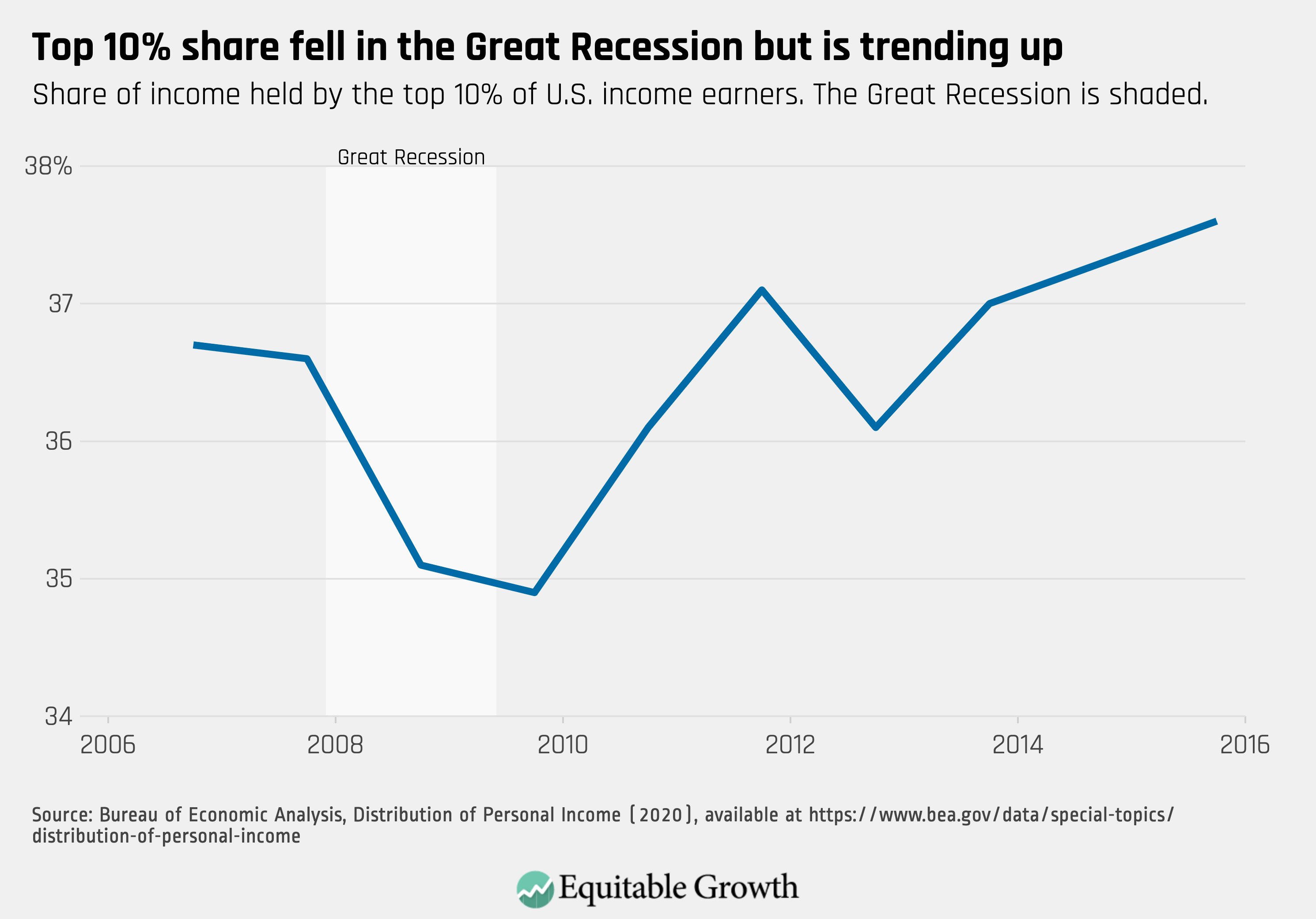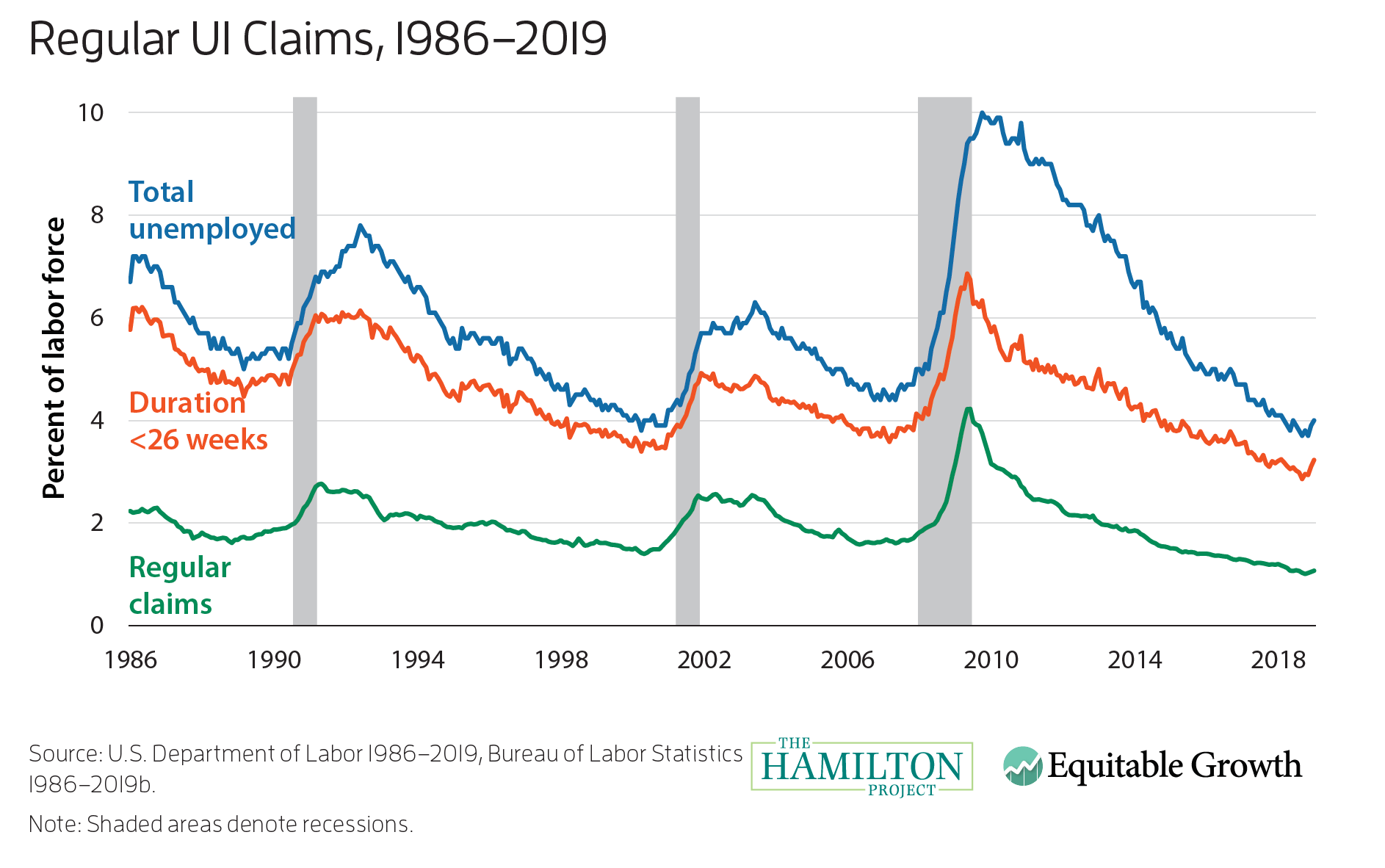
Policymakers have failed to provide Americans with guaranteed paid family and medical leave at the federal level. As a result, working families across the United States must strike a delicate balance: attending to their own medical needs and caregiving responsibilities at the same time as they keep the economy humming through their activities in the workplace. When a new child joins a family, when a serious personal medical need strikes, or when a loved one has an acute need for care, workers need time off from work. To keep the lights on and a roof overhead, they need pay during this time. And when a public health crisis strikes, this need for paid time off for one’s personal health needs and caretaking responsibilities is amplified.
Download FileWhat does the research say about paid family and medical leave policy design options in the United States?
In response to the coronavirus recession sparked by the COVID-19 pandemic, Congress has considered several proposals to expand limited paid family and medical leave for the duration of the public health crisis. To date, there is no permanent paid family and medical leave guaranteed at the federal level. In recent years, multiple policy approaches to providing paid leave permanently have emerged on both sides of the aisle in Congress. In February 2019, the Family and Medical Insurance Leave, or FAMILY Act—a bill that would create a national paid family and medical leave program—was reintroduced by Democrats in the 116th Congress as H.R. 1185/S. 463. In March 2019, Republicans offered two proposals that would allow parental leave in exchange for delayed Social Security claims upon retirement, the New Parents Act (H.R. 1940/S. 920) and the Child Rearing and the Development Leave Empowerment Act. In late 2019, Congress passed the Federal Employee Paid Leave Act (H.R. 1534), which extended paid leave benefits to millions of federal employees.
As more states and policymakers begin to focus on long-term access to paid leave for workers, it is important to consider the learning from states and countries that already guarantee paid family and medical leave. Five states have implemented paid leave programs—California (2004), New Jersey (2009), Rhode Island (2014), New York (2018), and Washington state (2020)—while Massachusetts, Connecticut, and Oregon, alongside the District of Columbia, are all in the process of implementing paid leave programs. This factsheet examines these existing paid leave programs in light of the pressing need for a federal solution that meets the needs of working families, employers, and the economy as a whole.
Reasons for implementing federal paid family leave
The evidence suggests that paid leave from employment for the following reasons is a key element of effective policy design:
- Care for a new child
- Care for a child, parent, spouse, or domestic partner with a serious health condition
- Address one’s own serious health condition
- Address a “qualifying exigency” arising out of a servicemember’s deployment or injury
Evidence from the states with paid family and medical leave suggests that they can support families in these circumastances while improving well-being and labor-market outcomes.
Well-being
In a public health emergency, access to paid leave may slow the spread of a pandemic and reduce families’ economic uncertainty. Without guaranteed paid family or medical leave, employees who are ill or caring for a sick family member may continue working in order to avoid financial hardship. These employees may show up at work while unknowingly carrying an illness, increasing the risk to public health. Currently, six states allow for paid sick leave during public health emergencies.1 While research on paid medical and caregiving leave has largely left the public health effects unexamined, the research on paid sick days offers important clues. It suggests that paid time off to address contagious illnesses may have important positive effects on public health by helping to reduce the spread of contagious diseases. An analysis of local and state paid sick day mandates in the United States using Google Flu Trend data found a significant reduction in the general flu rate after the mandates were implemented.2
The research suggests paid parental leave has a range of positive outcomes for both children and parents. One in 10 first-time mothers who work during pregnancy go back to work within the first month of their child’s life.3 In the absence of paid leave, too many families face an impossible choice between economic security and the health and well-being of their family. A growing body of research suggests that paid parental leave can improve a range of early child outcomes, including infant mortality, low birth weight, preterm births, breastfeeding rates, and pediatric head trauma, as well as later-in-life outcomes, including lower rates of attention deficit/hyperactivity disorder, obesity, ear infections, and hearing problems.4
The research suggests paid caregiving leave has a diverse set of positive outcomes for both care recipients and caregivers. A growing body of evidence suggests that paid caregiving leave supports positive outcomes for care recipients, including mental and physical health outcomes for disabled children with a family caregiver receiving paid leave.5 Evidence from California suggests that paid caregiving leave reduced nursing home occupancy among the elderly, possibly because enhanced access to family caregivers reduced nursing home stays.6 Research also suggests positive emotional health outcomes for paid leave for parents of children with special needs, as well as positive emotional and physical health outcomes for family caregivers providing care to aging relatives.7
Labor market outcomes
The demand for paid medical leave is high, and early research findings suggest positive labor market outcomes for those who take it. The vast majority of paid leave users are taking paid leave for their own medical needs. In the first 10 years of California’s program, workers registered more than 9 million medical leave claims, as compared to nearly 1.6 million parental leave claims and 175,198 caregiving claims.8 This suggests that many workers across the country could benefit from paid time off to attend to their own health if such an option were available. A recent study on paid medical leave in Rhode Island suggests that recipients who received paid leave along with vocational rehabilitation services were more likely to return to work and to receive higher wages than those who were not in the program.9
Most research on paid family and medical leave indicates improved labor market outcomes for new parents. Research on California’s paid family leave program finds that paid leave increased weekly work hours for mothers of young children by 6 percent to 9 percent, and their wages may have risen similarly.10 A 2019 study from California found that paid leave fosters an average $3,407 increase in income and is associated with a 10.2 percent decrease in the risk of new mothers dropping below the poverty line 1 year after childbirth.11 Evidence on long-term labor market outcomes is more nuanced, but one recent study suggests that access to paid leave in California and New Jersey improves the probability of labor market participation by 20 percent for new mothers in the years following her child’s birth.12
The research to date demonstrates that comprehensive paid family and medical leave has minimal impacts on employers. Data from California find no evidence that employee turnover at firms increases or that wage costs rise when paid leave-taking occurs.13 In New York, New Jersey, and Rhode Island, two-thirds of employers were supportive of their state’s paid leave programs, and another 15 percent to 20 percent were neutral.14
Definition of family members in paid leave programs
The evidence from the states suggests that an inclusive definition of family is key to meeting the caregiving needs of modern families:
Research tells us that today’s families include a diverse range of caretaking relationships. With 3.9 million babies born annually in the United States, parental leave is often at the center of the discussion on paid leave, but data on caregiving needs tells us that the focus of paid leave cannot end with new parents. In the United States, more than 34 million individuals are unpaid caregivers for individuals over the age of 50 who need help because of a physical or cognitive limitation.15
Additionally, many parents need to provide care to their disabled or sick children after the early period of life covered by parental leave. For instance, 16,000 children are diagnosed with cancer in the United States annually, and cancer and birth defects are the two most commonly listed reasons for a care claim in California’s program.16 During a public health crisis, workers may be called upon to provide care for adult children, extended family, or other adult individuals with familial-type relationships. Having an inclusive definition of family that includes older children, extended family, and close individuals not related by blood is vital in ensuring that workers can provide necessary care to the important people in their lives without risking economic uncertainty.
Length of leave for paid family leave
The evidence from state and international paid leave programs suggests reasonably lengthy periods of paid leave can have meaningful and positive impacts for recipients:
Research suggests that maternity leave entitlements under 1 year can have significant positive impacts for women and children. Leave entitlements under a year can improve job continuity for women and can increase their employment rates and wages several years after childbirth. For instance, extensions in job-protected maternity leave up to 1 year in Canada led to a 22 percent increase in the probability that a mother returned to her prechildbirth employer.17 The International Labour Organization’s standard for the duration of maternity leave has been 14 weeks since 2000, and 98 out of 185 counties with paid leave policies and available data meet or exceed this standard.18
Data from state programs indicate that recipients only take as much medical leave as their condition warrants, which is typically less than 12 weeks. Medical leave lengths vary depending on the specific needs of the condition. Cancer treatment, for example, may require a longer leave than recovery from a broken ankle.19 This evidence suggests that employers need not worry about workers taking advantage of their leave when offered.
Wage replacement during paid family leave
Evidence from the states suggests that the share of wages replaced by a paid leave program matters for participation, especially for the least-advantaged caregivers:
Evidence from the states shows that the wage-replacement rate can have a dramatic impact on take-up of leave for the least-advantaged caregivers. The introduction of paid leave in California nearly doubled leave-taking rates for new mothers, and those impacts were most substantial for unmarried, minority, and less-educated mothers.20 Wage replacement has also been shown to encourage more fathers to take parental leave, resulting in a more equitable division of childcare responsibilities. Importantly, evidence suggests that California’s original 55 percent replacement rate was too low for low-income households to participate.21 This indicates the need for progressive wage replacements that pay lower-income workers a high percentage of their salaries while on leave.
Job protection during paid family leave
Evidence from the states and the United Kingdom suggests that job protection and wage-replacement rates work together to promote both short- and longer-term positive outcomes:
In addition to progressive wage replacement, an effective national paid leave system must include robust job protection for those taking leave. Research shows that these two components work together to promote positive employment outcomes for mothers in both the short and long term. A 2017 study on the labor market effects of maternity leave policy in Great Britain found that wage replacement increases the probability of mothers returning to work in the months following childbirth, but expanded job protections substantially increased mothers’ employment rates in the longer term.22 By accessing paid leave with job protection, women stay connected to their prebirth jobs, thereby ensuring that mothers remain valuable to their employers and do not lose the employer-specific skills they developed prior to their leave. It is important to note that the British case examined the expansion of a maternity-leave-only policy, rather than a broader paid family and medical leave policy that would extend job protections to all categories of care leave. The impacts of broader job-protected leave may look quite different in the case of federal proposals such as the FAMILY Act, which simply extends FMLA’s broad job protections to apply to paid parental, medical, and caregiving leave.









